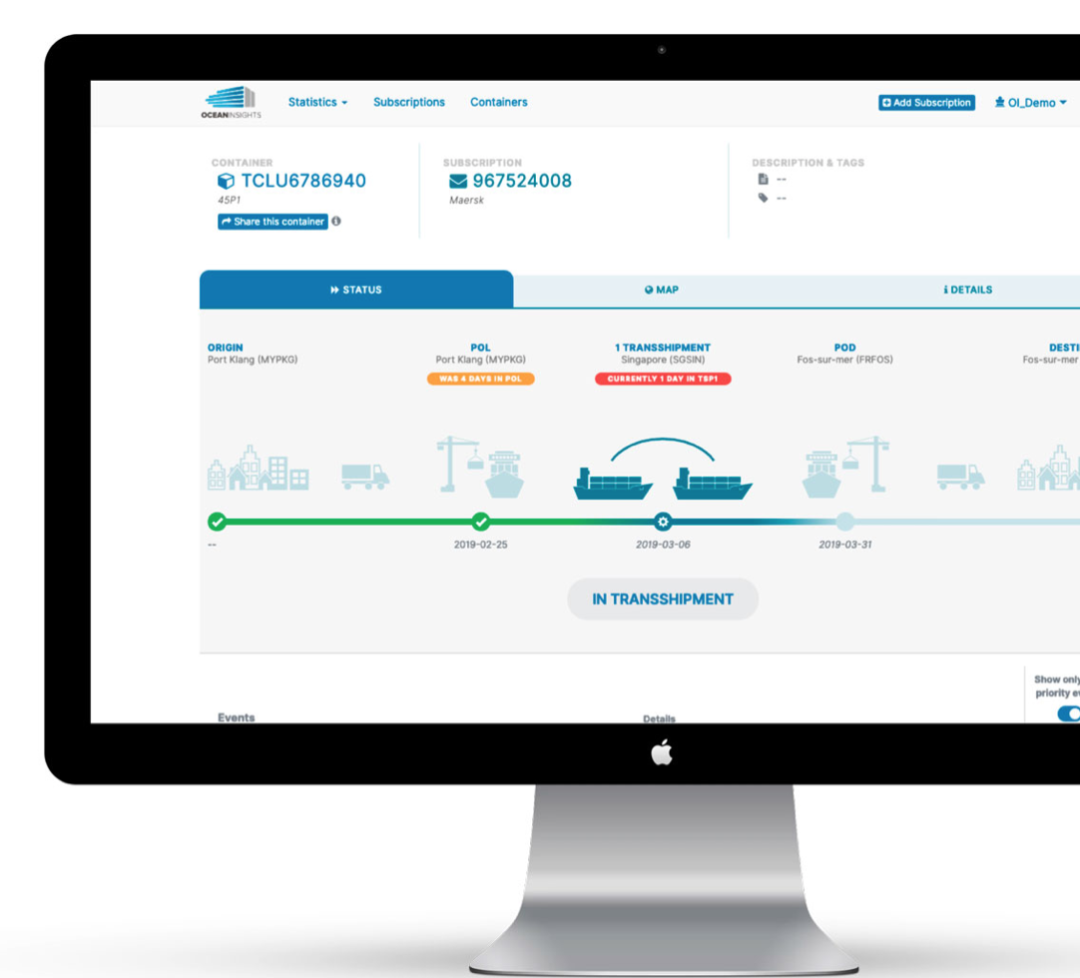Project44 acquires German ocean freight tracking firm
Deal expands supply chain visibility to help shippers cope with pandemic disruptions in container delays, freight costs, and port congestions, firm says.

Supply chain data provider project44 has acquired a German firm that provides ocean freight tracking information, saying the deal will allow it to expand the maritime visibility solutions it offers to complement its over-the-road supply chain visibility data set.
Chicago-based project44 bought Rostock, Germany-based Ocean Insights for an undisclosed sum. The deal comes just three months after project44 raised $100 million in venture capital and said it planned to accelerate its growth in providing shipment visibility solutions.
Project44 buys the firm as surging global trade volumes during the pandemic have disrupted global supply chain patterns, sent freight rates soaring, and contributed to major import delays due to significant port congestions.
“While we’re hopeful these container and port roadblocks will ease soon, the last year has exposed several weak points for supply chains. We believe our customers need a single supply chain visibility solution across all modes and geographies to remain agile today and well into the future,” Jett McCandless, founder and CEO of project44, wrote in a blog post.
Founded in 2012, Ocean Insights provides container tracking, sailing schedules, and ocean freight analytics. The company says it tracks 350,000 containers daily, providing track and trace functionality across the vast majority of shipping lines, 700 seaports, and more than 5,000 vessels.
“After a slowdown on imports last year, ocean freight quickly took a turn in 2020 as supply chains started to replenish inventory while global consumers shifted to a homebody economy,” McCandless wrote in the blog. “American imports from China have increased as more are staying home and online shopping on top of increased demand for medical and personal protective equipment (PPE). This demand has caused several challenges for ocean freight, including a container shortage and increased shipping rates.”
According to McCandless, ocean freight is a “linchpin” for global supply chains, so a lack of ocean visibility can start a costly domino effect for international shippers.
From Ocean Insights’ point of view, the move will allow it to “supercharge” its offerings, such as its Container Track & Trace (CTT) and Container Sailing Schedules (CSS) products, Ocean Insights’ CEO and CTO, Felix Richter, said in a blog post.
Richter pointed to project44’s existing reach in Europe, saying his firm would benefit by tapping into the Chicago company’s multi-modal supply chain visibility network in the region, featuring connections to more than 780 telematics providers, which represents 94% of the European market. “Through this partnership, we can now supercharge our offerings to customers and will be able to deliver the strongest ocean freight visibility product to date. We will do this through native integrations, high-fidelity data, and advanced analytics and together, have on offer, an unrivaled set of multi-modal solutions for end-to-end supply chain visibility,” Richter said.
Following the acquisition, Richter will stay on as general manager of ocean at project44, while Ocean Insights Chief Commercial Officer Robin Jaacks will join project44’s commercial team and the two companies' product engineering teams will merge, according to Vernon O'Donnell, chief product officer at project44.
Together, the combined companies will have 375 team members across four continents, including more than 80 employees of Ocean Insights. They predict continued growth in 2021, including hiring employees to fill more than 90 positions that are currently open, O'Donnell said.
While the two teams will combine forces on technology and product development, the Ocean Insights business unit will remain in Germany, as part of an effort to expand project44's presence in the “critical” German market and to send a signal that project44 takes Europe seriously and will provide “global solutions with regional expertise,” O'Donnell said.
Editor's note: This article was revised on March 4 to include additional details from a project44 executive.
World’s leading ocean visibility solution-@Ocean_Insights, joins forces with @freightpipes, to redefine the value of end-to-end #supplychain visibility-https://t.co/JjJvBKrDaB#project44 #mergersaquisitions #supplychainvisibility #e2evisibility #oceanfreight #intermodal
— Ocean Insights (@Ocean_Insights) March 4, 2021
Related Articles

Copyright ©2024. All Rights ReservedDesign, CMS, Hosting & Web Development :: ePublishing